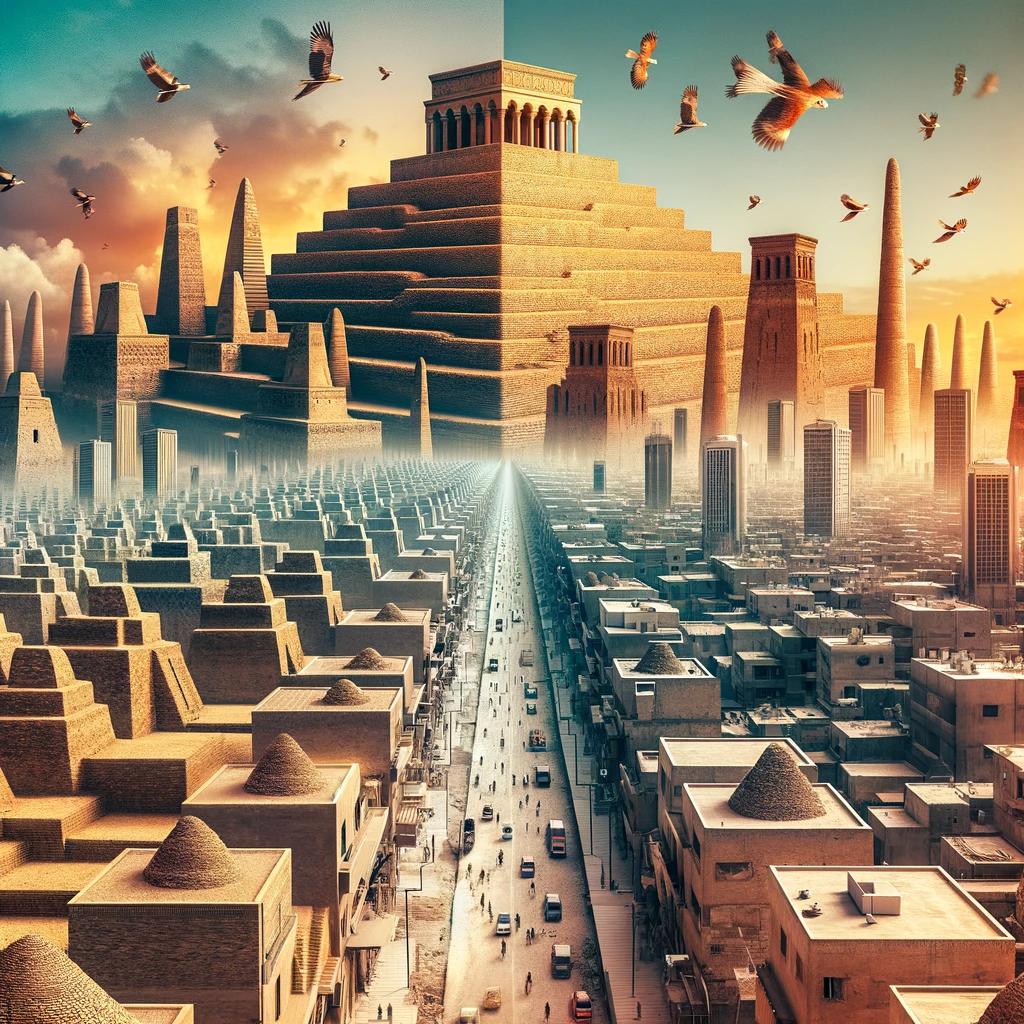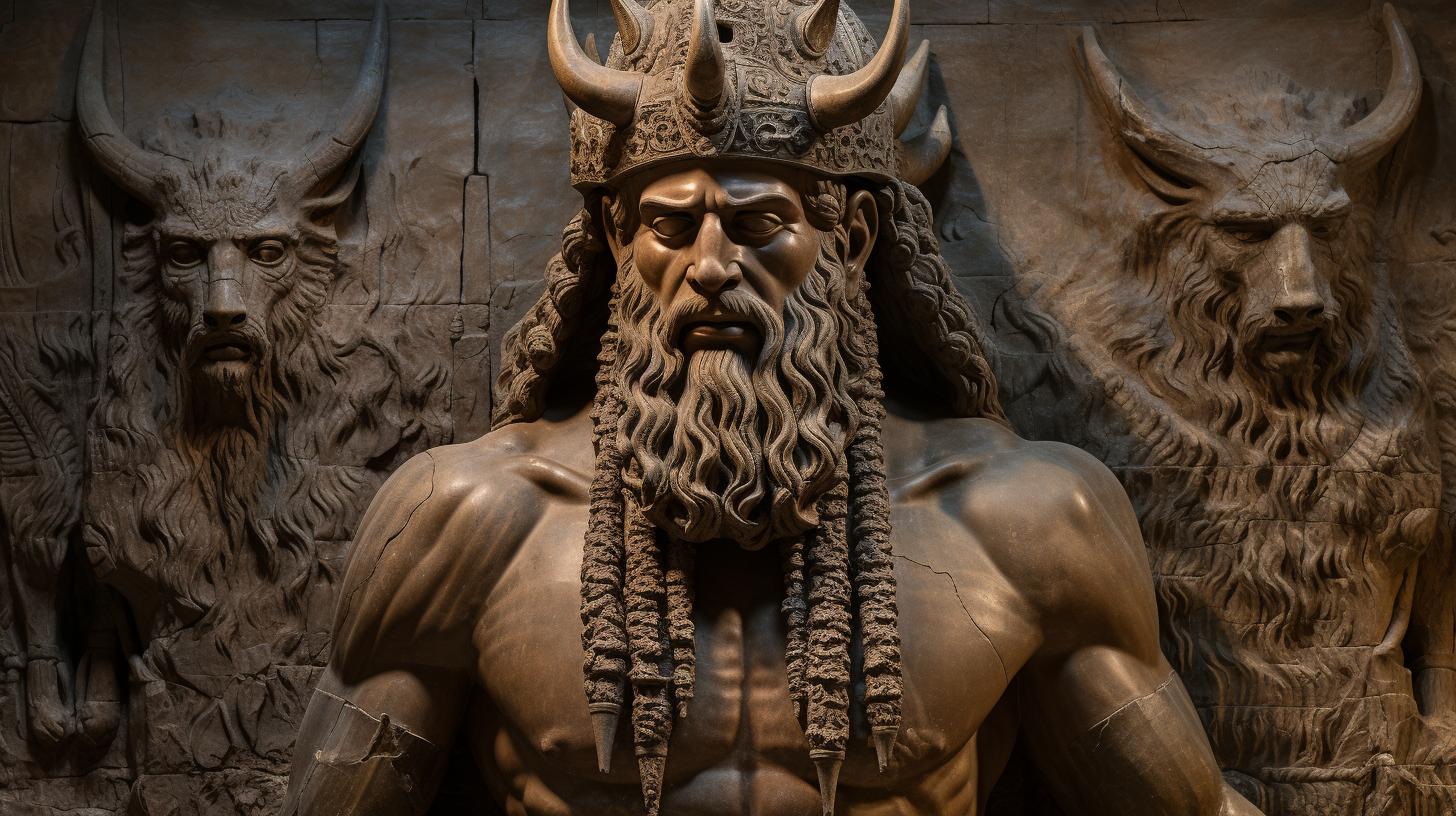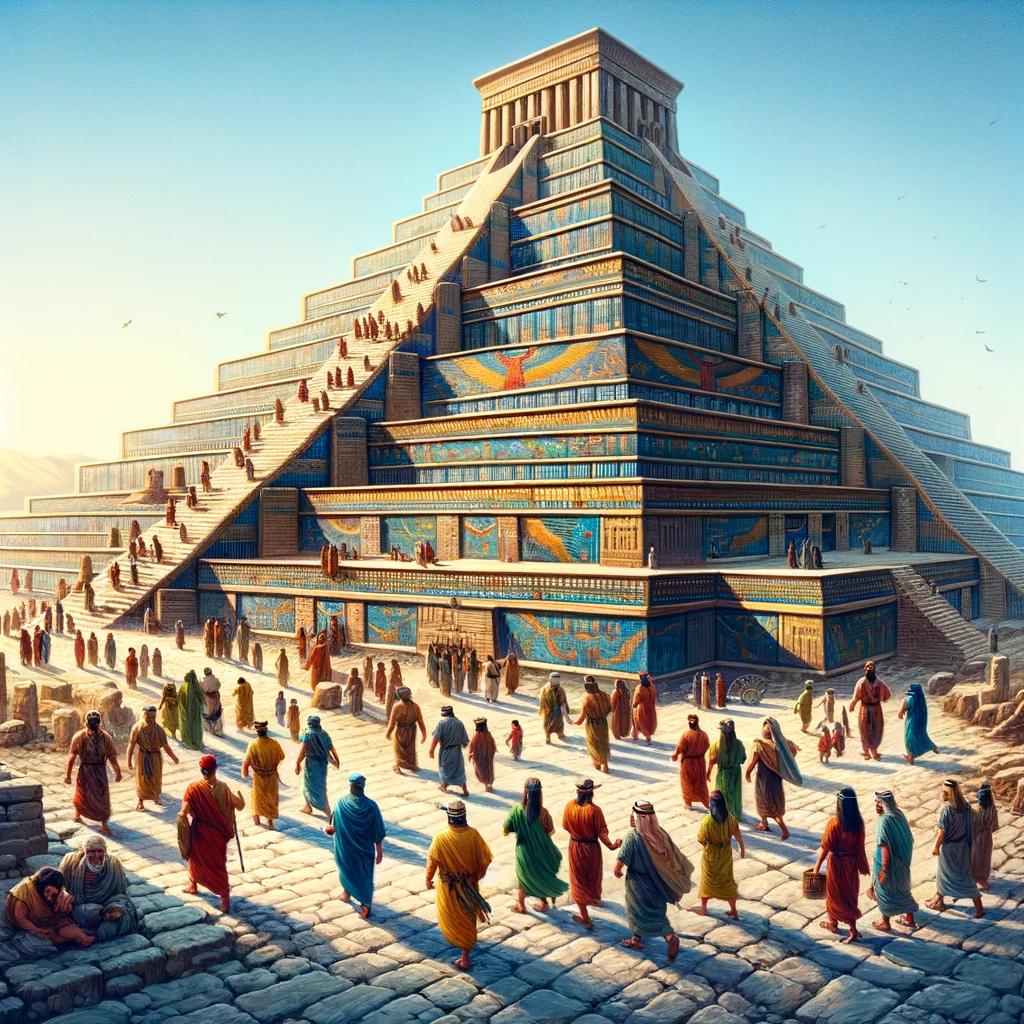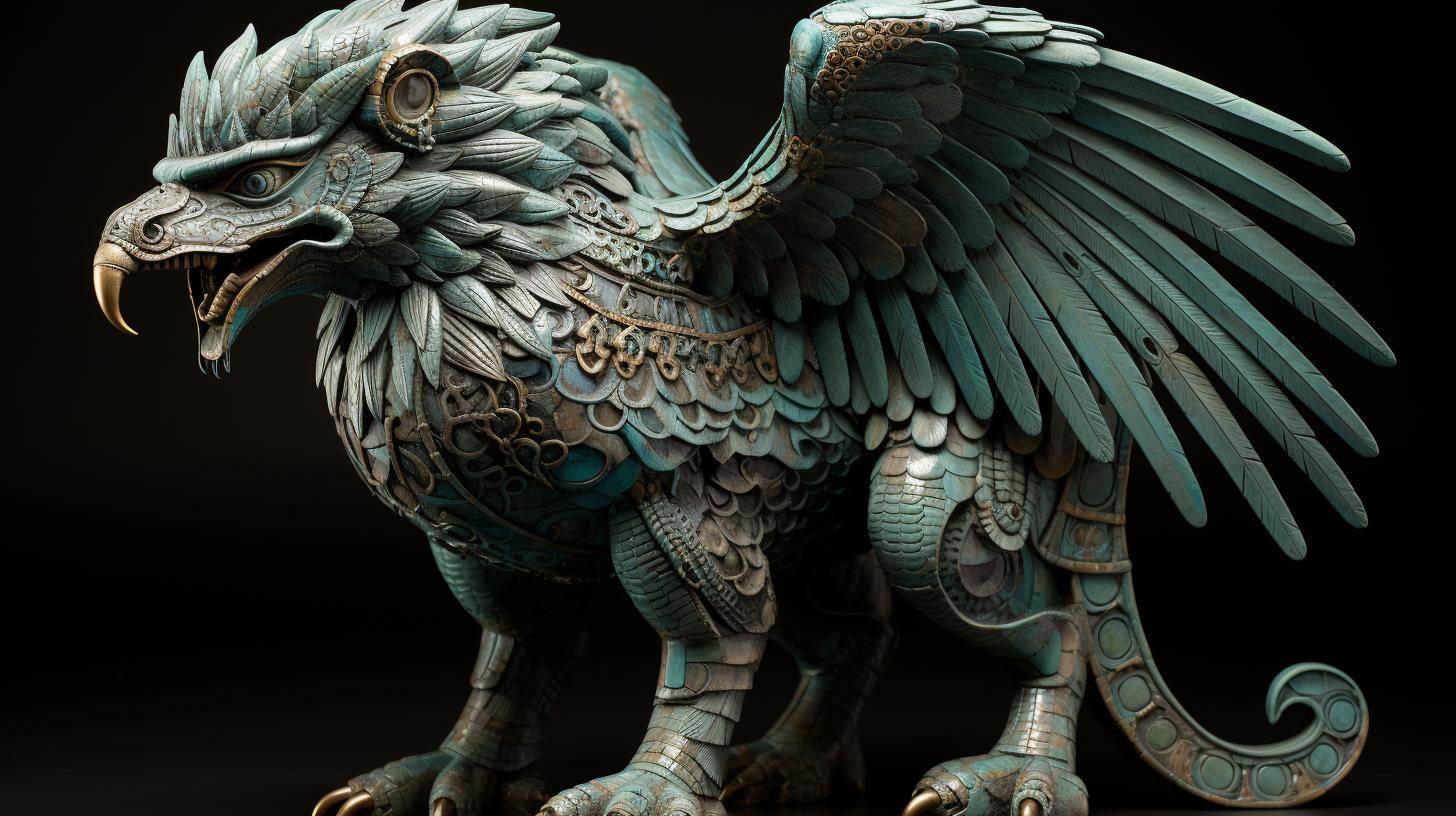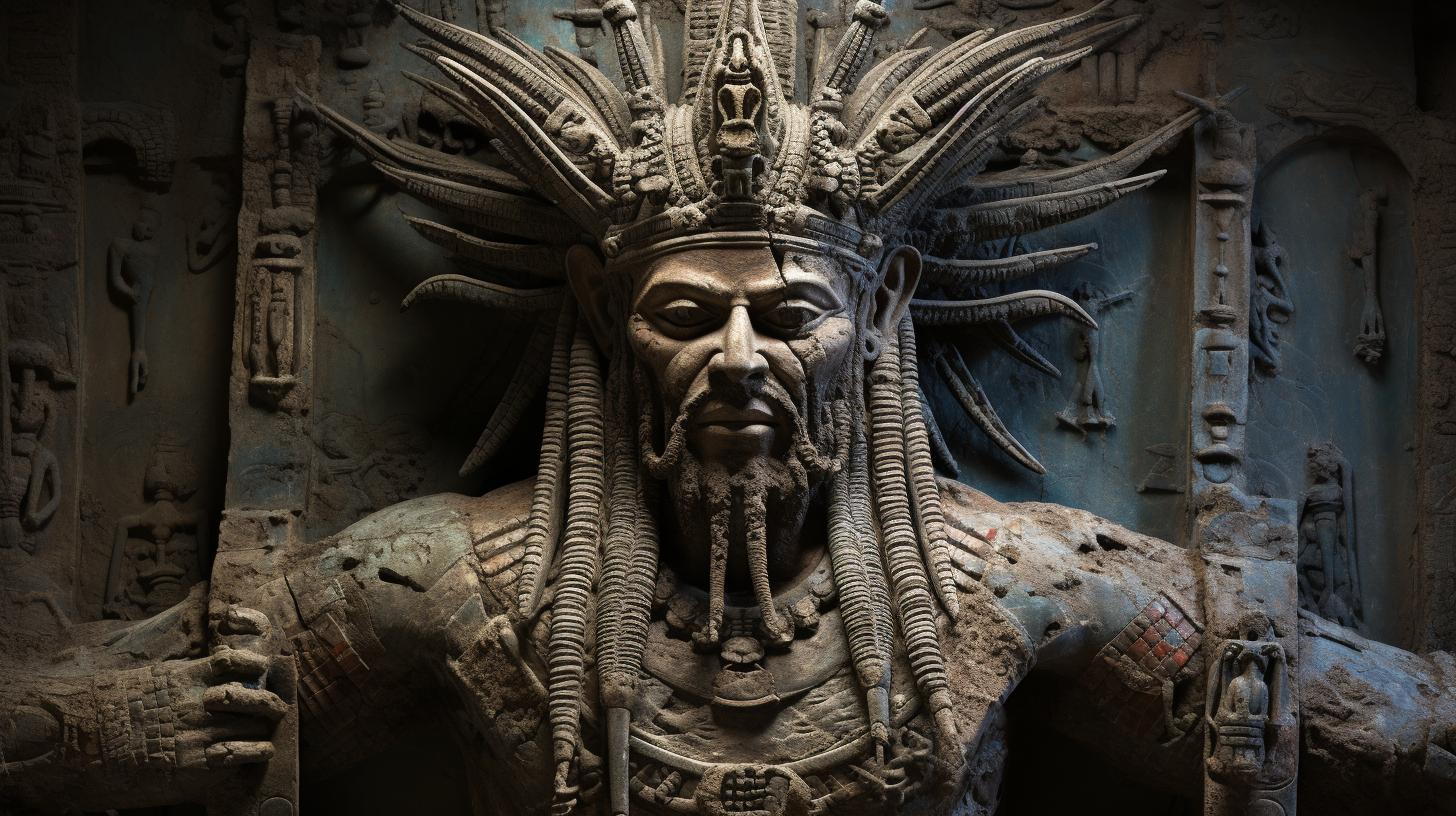Does Mesopotamia Still Exist: Unraveling the Ancient Mysteries in the Heart of America
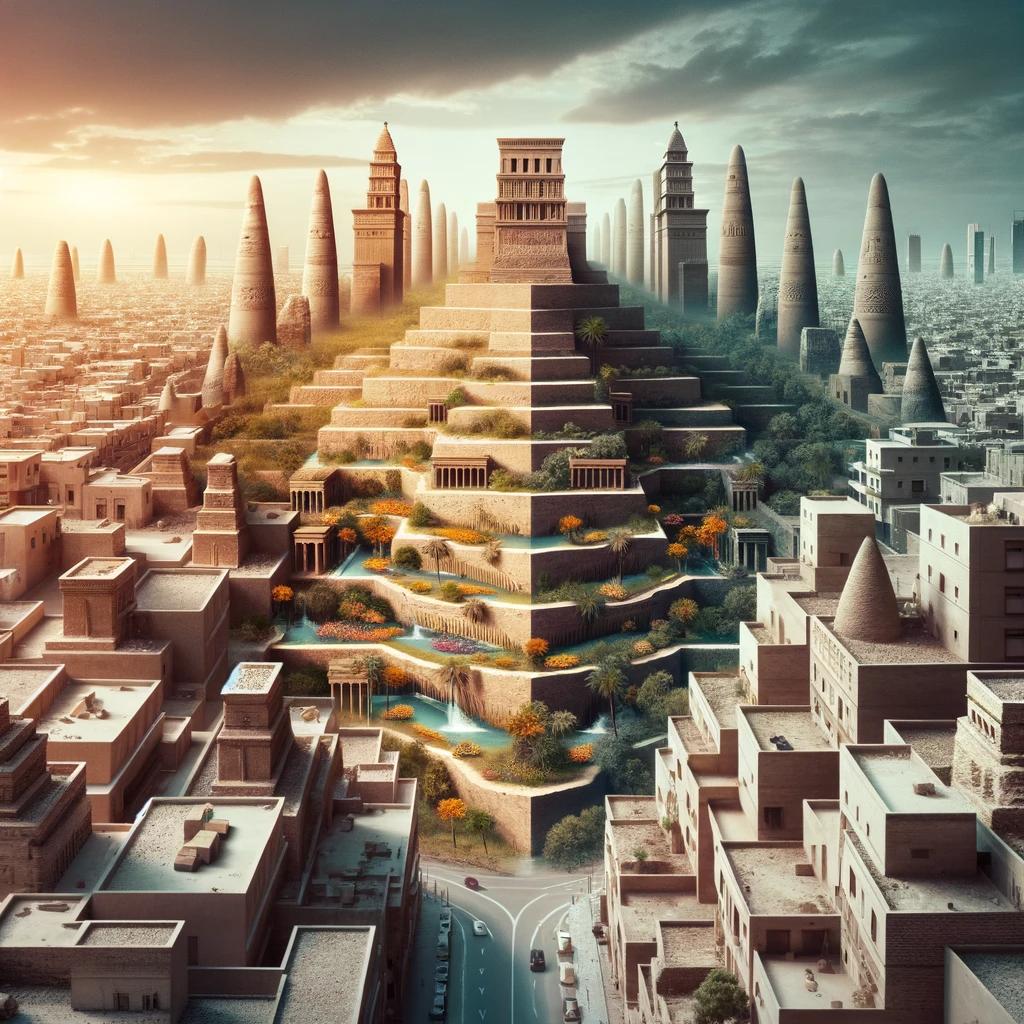
Mesopotamia, an ancient civilization known for its remarkable contributions to history, continues to intrigue us today. As we delve into the legacy of this magnificent land, one question arises: does Mesopotamia still exist? This article explores the geographical location, societal advancements, religious beliefs, archaeological discoveries, and modern influences of Mesopotamia, shedding light on the captivating aspects of this enduring civilization.
Join us on a journey to uncover the mysteries and significance of Mesopotamia, from its ancient ruins to its impact on contemporary society.
Understanding Mesopotamia: An Ancient Civilization That Lives On
Mesopotamia, an ancient civilization nestled between the Tigris and Euphrates rivers, holds great significance in history.
This cradle of civilization witnessed the emergence of city-states, the development of writing systems, and the advancement of various technologies. Examining the legacy of ancient Mesopotamia unravels a rich tapestry of political, social, and cultural achievements that continue to shape our understanding of human history.
The Significance of Mesopotamia in History
Mesopotamia, often referred to as the “land between the rivers,” played a pivotal role in shaping ancient civilizations and becoming the foundation for modern society. It was here that the world’s first cities emerged, such as Uruk and Ur, establishing urban structures, governance systems, and trade networks that laid the groundwork for future civilizations.
Moreover, Mesopotamia witnessed groundbreaking advancements in multiple fields. The development of cuneiform writing, a system of wedge-shaped symbols on clay tablets, revolutionized communication and documentation. Mesopotamian scholars made significant contributions to mathematics, including the development of the base-60 numerical system and the concept of the circle.
Their astronomical observations paved the way for the modern understanding of celestial bodies and the measurement of time.
Examining the Legacy of Ancient Mesopotamia
Ancient Mesopotamia’s legacy extends far beyond its exceptional advancements. Its legal system, known as the Code of Hammurabi, established principles of justice and governance that influenced legal codes throughout history. Mesopotamian literature, including the Epic of Gilgamesh, reflects enduring themes of heroism, mortality, and the search for meaning.
Furthermore, the architecture and engineering marvels of Mesopotamia, such as impressive ziggurats and irrigation systems, exemplify their innovative craftsmanship and engineering expertise. These physical remnants provide a glimpse into the sophisticated society and intricate belief systems that flourished in ancient Mesopotamia.
Debunking the Myth: Does Mesopotamia Still Exist Today?
While Mesopotamia as an ancient civilization no longer exists as a political entity, its legacy lives on through its enduring impact on language, law, science, and culture. The land that encompassed Mesopotamia is now part of modern-day Iraq, Kuwait, eastern Syria, and southeastern Turkey.
Despite the passage of millennia and regional geopolitical changes, the spirit of Mesopotamia continues to resonate. Scholars, archaeologists, and enthusiasts from around the world tirelessly study Mesopotamian artifacts, decipher ancient texts, and unveil hidden aspects of this ancient civilization.
Through their dedication and discoveries, the legacy of Mesopotamia still thrives and captivates our imagination, reminding us of the remarkable contributions this vanished civilization made to the world we inhabit today.
Rediscovering the Land of Mesopotamia: Where is it Located?
In order to understand the historical significance of Mesopotamia, it is essential to explore its geographical location and how it has evolved over time. This region, often referred to as the “Cradle of Civilization,” is situated in the eastern part of the Middle East.
Exploring the Geographical Location of Mesopotamia
Mesopotamia was located in the fertile area between the Tigris and Euphrates rivers, which provided abundant resources for ancient civilizations. This region, known as the “Land between the Rivers,” spanned across present-day Iraq, Kuwait, eastern Syria, southeastern Turkey, and southwestern Iran.
In ancient times, the Tigris and Euphrates rivers served as essential water sources, supporting agricultural activities and facilitating trade and transportation. The rich soil along the riverbanks contributed to the development of advanced farming techniques and the establishment of thriving civilizations.
Tracing the Borders of Mesopotamia in Modern Times
Today, the borders have changed, and the ancient region of Mesopotamia is primarily encompassed by modern-day Iraq. However, it is important to note that Mesopotamia extended beyond the borders of Iraq, with its influence reaching neighboring countries.
While the exact boundaries of ancient Mesopotamia are not precisely defined, its impact can be traced to areas beyond Iraq’s borders, including parts of Syria, Turkey, Iran, and Kuwait. These regions were interconnected through trade routes, cultural exchanges, and the diffusion of knowledge and ideas.
Understanding the Present-Day Countries that Overlap with Mesopotamia
Several present-day countries overlap with the historical region of Mesopotamia, showcasing the continuing significance of its legacy. These countries include Iraq, Syria, Turkey, Iran, and Kuwait. Each of these nations carries unique traces of Mesopotamian heritage, whether through archaeological sites, cultural practices, or linguistic connections.
Although the borders may have shifted over time, the enduring influence of Mesopotamia can be seen in the shared historical and cultural ties among these countries. Exploring the present-day connections helps us appreciate the lasting impact of Mesopotamia and its contribution to the development of human civilization.
As we delve into the rediscovery of Mesopotamia and its importance, we can glean insights into the origins of civilization, unravel the mysteries of the past, and appreciate the enduring legacy that continues to shape our world today.
Unveiling Ancient Mesopotamian Civilization
Mesopotamia, the cradle of civilization, offers a fascinating glimpse into the rich history of ancient societies. This section explores various aspects of the Mesopotamian civilization, shedding light on its daily life, political structure, economic systems, and artistic achievements.
Daily Life and Society in Ancient Mesopotamia
Ancient Mesopotamian society was a complex web of interactions and hierarchies. The majority of the population lived in city-states, working in various occupations such as farming, trade, and craftsmanship. Families played a central role, with kinship ties forming the basis of social structure.
Education was highly valued, and scribes held an esteemed position in society. Religion played a significant role in daily life, with temples serving as religious and economic centers.
Mesopotamian Politics, Economy, and Trade Systems
In ancient Mesopotamia, political power was concentrated in the hands of kings, who ruled over city-states or kingdoms.
These rulers developed intricate systems of governance and laws to maintain order and control their territories. The economy was primarily agrarian, with a reliance on irrigation for successful crop cultivation. Trade flourished, facilitated by the development of a sophisticated network of canals and rivers.
Art, Architecture, and Innovations of Ancient Mesopotamia
The Mesopotamians were pioneers in art, architecture, and technological advancements. From intricate ivory carvings to breathtaking ziggurats, their artistic expressions showcased a deep understanding of aesthetics. Architectural marvels like the cities of Ur and Babylon displayed their engineering ingenuity.
Additionally, Mesopotamians made significant contributions to mathematics and astronomy, inventing concepts such as the wheel and the first writing system, cuneiform.
Through a closer examination of daily life, political structures, and artistic achievements, we can marvel at the enduring legacy of ancient Mesopotamian civilization.
Join us as we delve deeper into the mysteries and accomplishments of this remarkable period in history.
Myths and Gods: Mesopotamian Religion and Beliefs
Embark on a journey through the fascinating world of Mesopotamian religion and unravel the myths and gods that shaped their beliefs. Dive into the diverse pantheon of Mesopotamian deities, each with their unique attributes and powers.
Explore the rituals, temples, and worship practices that were central to the lives of ancient Mesopotamians. Discover the mesmerizing afterlife beliefs and their views on the soul. Let’s delve into the captivating realm of Mesopotamian mythology and uncover the spiritual fabric of this ancient civilization.
Examining the Pantheon of Mesopotamian Deities
Step into the realm of gods and goddesses revered by the ancient Mesopotamians. From Enki, the god of wisdom, to Ishtar, the goddess of love and war, discover the major deities that held immense significance in Mesopotamian religious practices.
Learn about their roles, symbols, and legends that shaped the religious landscape of this ancient civilization.
Rituals, Temples, and Worship in Ancient Mesopotamia
Uncover the sacred rites and rituals that were performed in Mesopotamian temples. Explore the elaborate ceremonies, sacrifices, and offerings dedicated to the gods. Delve into the architectural marvels of ancient Mesopotamian temples and how they provided a place of worship and connection with the divine.
Witness the devotion and spiritual practices that formed an integral part of daily life in Mesopotamia.
Mesopotamian Afterlife and Beliefs about the Soul
Gain insight into the Mesopotamian perspective on the afterlife and explore their beliefs about the soul. Journey through the underworld, where the deceased embarked on an eternal journey. Learn about the rituals and practices associated with death and burial, as well as the concepts of judgment and the fate of the soul in the afterlife.
Delve into the intricacies of Mesopotamian beliefs surrounding life beyond death.
Archaeological Discoveries: Uncovering the Secrets of Mesopotamia
Archaeological explorations in Mesopotamia have yielded remarkable insights into the ancient civilization that once thrived in this region. Through the investigation of excavations and archaeological sites, researchers have pieced together the story of Mesopotamia, unraveling its mysteries and shedding light on its rich history.
Investigating Excavations and Archaeological Sites in Mesopotamia
The exploration of archaeological sites in Mesopotamia has allowed experts to uncover a wealth of knowledge about the civilizations that once inhabited this land. Careful excavation techniques have revealed ancient cities, palaces, temples, and even tombs, providing valuable insight into the daily life, culture, and architecture of the Mesopotamians.
Notable sites such as Ur, Babylon, and Nineveh have been extensively excavated, unearthing evidence of advanced urban planning, impressive infrastructure, and sophisticated irrigation systems. Through these excavations, archaeologists have discovered artifacts, inscriptions, and clay tablets that offer glimpses into the social, political, and religious aspects of Mesopotamian society.
Remarkable Artifacts and Treasures from Ancient Mesopotamia
The uncovering of remarkable artifacts and treasures has allowed us to marvel at the artistic and technological achievements of ancient Mesopotamia. From exquisite jewelry and intricately carved statues to finely crafted pottery and delicate seals, these artifacts provide tangible connections to the past.
Ancient Mesopotamians were skilled in various crafts and industries, evident in the superior quality of their metallurgy, textile production, and cuneiform writing. The artifacts discovered not only showcase the creativity and craftsmanship of the Mesopotamian people but also offer valuable insights into their trade networks, cultural exchange, and aesthetic preferences.
Advancements in Archaeology Shedding Light on Mesopotamia’s Past
Advancements in archaeological methods and technologies have played a crucial role in unraveling the past of Mesopotamia. Excavations, combined with remote sensing techniques and scientific analyses, have allowed for a more comprehensive understanding of this ancient civilization.
Through the use of radiocarbon dating, DNA analysis, and Geographic Information Systems (GIS), archaeologists have been able to obtain accurate chronologies, determine the origins of Mesopotamian populations, and reconstruct ancient landscapes.
These advancements in archaeology continue to contribute to our knowledge of Mesopotamia, filling gaps in historical narratives and dispelling misconceptions.
- The excavation of the Royal Cemetery of Ur revealed a treasure trove of royal tombs, containing intricate jewelry, ceremonial items, and evidence of human sacrifices.
- Archaeologists have uncovered an extensive collection of cuneiform tablets, providing invaluable information about Mesopotamian literature, laws, and administrative systems.
- The discovery of the Code of Hammurabi, a well-preserved Babylonian legal code, shed light on the social structure and justice system of ancient Mesopotamia.
- Ancient Mesopotamian writing systems, including cuneiform and pictographic scripts, have given rise to the study of the earliest known forms of writing.
These archaeological discoveries continue to captivate scholars and enthusiasts alike, providing a glimpse into the ancient world of Mesopotamia and shaping our understanding of human civilization.
Modern Influence: Mesopotamia’s Impact on Contemporary Society
Mesopotamia, an ancient civilization rich in history and ingenuity, continues to shape and influence modern society. Its contributions span various fields, leaving a profound impact on language and writing, mathematics, science, astronomy, as well as law, governance, and social systems.
Understanding Mesopotamian Contributions to Language and Writing
The invention of writing is among Mesopotamia’s most significant contributions, revolutionizing human communication and recording of information. The earliest known writing system, cuneiform, emerged in Mesopotamia around 3200 BCE. This development enabled the recording of laws, literature, religious texts, and administrative documents, laying the foundation for future civilizations’ written languages.
Mesopotamian Influence on Mathematics, Science, and Astronomy
Mesopotamians made remarkable strides in mathematics, introducing concepts like the base-60 numeral system and the idea of a circle being divided into 360 degrees. They developed formulas for calculating areas and volumes, laying the groundwork for trigonometry and geometry.
In astronomy, Mesopotamians were pioneers in observing celestial bodies, studying the movements of stars and planets, and creating accurate calendars to track time.
Mesopotamian Legacy in Law, Governance, and Social Systems
Mesopotamia’s influence on law and governance systems is remarkable.
The Code of Hammurabi, dating back to 1754 BCE, is one of the most famous legal codes ever created, outlining laws and punishments for various offenses. Mesopotamians also developed complex administrative systems, including bureaucracy and the use of seals for official documentation.
Their societal structure consisted of kings, priests, and various social classes, with laws and regulations governing matters related to marriage, property, and commerce.
In addition, Mesopotamian cities served as centers of trade, facilitating the development of commercial laws and institutions.
They established trade routes and implemented methods of contract enforcement and dispute resolution, laying the foundation for modern business practices.
Overall, Mesopotamia’s influence on modern society cannot be overstated. Its advancements in language and writing, mathematics, science, astronomy, law, governance, and social systems have shaped the world as we know it, leaving an enduring legacy that still resonates in contemporary times.
Preserving the Legacy: Efforts to Maintain Mesopotamian Heritage
UNESCO World Heritage Sites in Mesopotamia
Mesopotamia, with its rich historical significance, is home to several UNESCO World Heritage Sites. These sites, such as the ancient city of Babylon and the ziggurat at Ur, play a crucial role in preserving and showcasing the cultural heritage of Mesopotamia.
Efforts are underway to ensure the conservation and protection of these sites, allowing visitors to witness the grandeur of this ancient civilization.
Challenges in Preserving and Protecting Mesopotamian Artifacts
Maintaining the integrity of Mesopotamian artifacts is a complex task. Time, climate conditions, and human activities pose significant challenges to their preservation. Archaeologists, conservationists, and local authorities are collaborating to develop strategies for protecting these priceless treasures.
Through stabilization measures, proper storage, and careful restoration techniques, the aim is to safeguard the artifacts for future generations to appreciate and explore.
Engaging the Public in Mesopotamian Cultural Heritage Awareness
Awareness and education play vital roles in preserving Mesopotamian heritage.
Efforts are being made to engage the public through various means, including interactive exhibitions, cultural events, and educational programs. By fostering a sense of appreciation and understanding, the aim is to instill a responsibility to protect and value this ancient civilization’s legacy.
Through virtual experiences and accessible information, individuals from all around the world can connect with and learn about Mesopotamia’s cultural heritage.
Exploring Mesopotamia Today: Educational Opportunities and Travel
Mesopotamian Studies and Academic Programs
For those eager to delve deep into the rich history of Mesopotamia, various educational opportunities await. Many universities and institutions in the United States offer Mesopotamian studies programs, allowing students to gain in-depth knowledge about this ancient civilization.
Through these academic programs, students can explore Mesopotamian art, literature, archaeology, religion, and more. Expert professors and scholars guide students in their quest for understanding, providing valuable insights into the complexities of Mesopotamian culture.
Mesopotamia as a Tourist Destination: Must-See Sites and Experiences
Travelers with an interest in ancient history will find Mesopotamia to be a captivating destination. While the region may hold remnants of the past, modern-day countries like Iraq offer opportunities to explore ancient Mesopotamian sites.
An excursion to the city of Ur allows visitors to witness the ruins of the Ziggurat, a massive stepped tower once associated with religious ceremonies. The ancient city of Babylon, with its iconic Ishtar Gate, also beckons tourists interested in Mesopotamian architecture.
These awe-inspiring sites provide a glimpse into the grandeur of a bygone era.
Cultural Tours and Activities for Mesopotamia Enthusiasts
For those seeking a more immersive experience in Mesopotamian culture, cultural tours and activities offer a unique opportunity. These guided tours take visitors into the heart of ancient Mesopotamia, where they can witness firsthand the remnants of this once-great civilization.
From exploring archaeological sites to participating in interactive workshops on Mesopotamian crafts and traditions, these experiences offer a chance to engage with the history and heritage of Mesopotamia. Travelers can gain a deeper appreciation for the art, architecture, and daily life of the ancient Mesopotamians through these enriching cultural activities.
Frequently Asked Questions about Mesopotamia
Here are some frequently asked questions about Mesopotamia, providing insights into its major cities, written language, trade practices, religious beliefs, and the possibility of visiting ancient ruins today.
What were the major cities of Mesopotamia?
- Ur
- Nippur
- Babylon
- Assur
- Nineveh
Did Mesopotamia have a written language?
Yes, Mesopotamia is known for developing one of the earliest known forms of writing called cuneiform.
This script involved making wedge-shaped marks on clay tablets using a stylus.
How did Mesopotamian societies conduct trade?
Mesopotamia was a hub of trade and commerce. Its societies engaged in both local and long-distance trade, utilizing rivers such as the Tigris and Euphrates to transport goods. They developed systems of weights, measures, and trade agreements to facilitate commerce.
What were the main Mesopotamian religious beliefs?
- The Mesopotamians believed in a pantheon of gods and goddesses.
- They practiced polytheism, assigning different deities to various aspects of life.
- Religious rituals, temples, and offerings played a crucial role in their spiritual practices.
Is it possible to visit ancient Mesopotamian ruins today?
While Mesopotamia’s ancient cities and ruins have suffered damage over time, some archaeological sites are still accessible for exploration.
However, it’s important to note that certain areas may have restrictions due to ongoing preservation efforts or regional instability.
.

